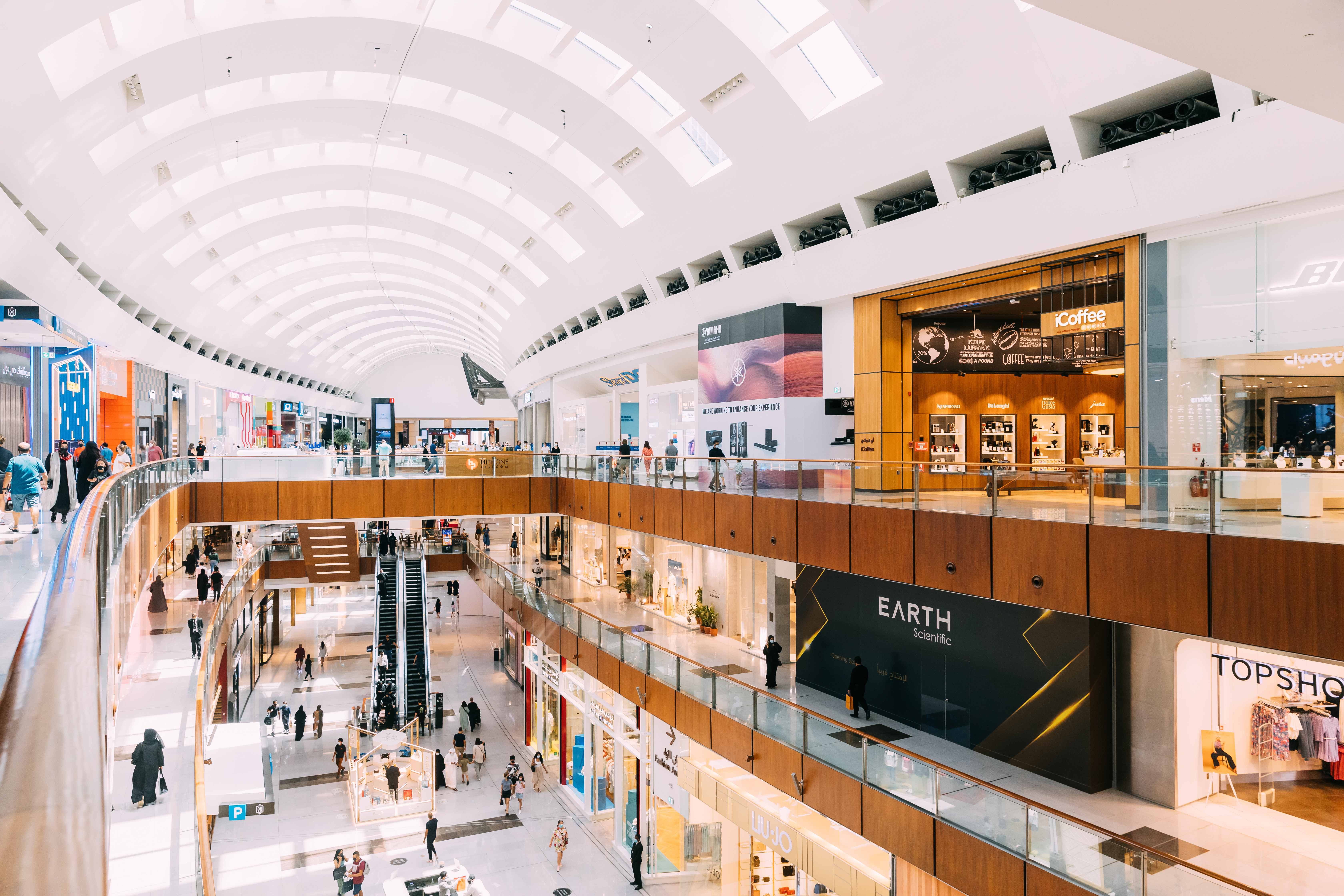Trade in full transformation - Stage 3 - The shopping centre of tomorrow

The shopping mall of tomorrow
It was in 1954, nearly 70 years ago, that architect Victor Gruen invented the concept of the shopping mall by building the Northland Center in Detroit. This concept quickly spread to many countries, including France. The Conseil National des Centres Commerciaux (National Council of Shopping Centres) lists 839 shopping centres in France, with 38,800 shops and an estimated turnover of €129 billion, i.e. 5% of France's GDP. 550,000 direct jobs are generated by these commercial facilities. It is therefore a sector of prime importance.
However, the very principle of the shopping centre is often questioned. Finger-pointed because it favours individual car travel, because of its carbon footprint and the land artificialisation it causes, but also because it is in direct competition with e-commerce, the shopping centre is no longer attractive, or less so than before. The very name "shopping centre" is being debated. Is it a commercial oversupply? Concept unsuited to environmental and urban logistics issues? A worn-out principle after 70 years of good and loyal service? Let's try to decipher the current trends.
Explaining commercial vacancy
The vacancy rate in shopping centres in 2021 was 11.6%. The evolution of teleworking has disrupted the affluence of large shopping centres located close to the main employment areas. After two years of the COVID crisis and a current period of economic crisis and changing work patterns, shopping centres are facing an evolution of the concept.
This figure for unoccupied space reflects household consumption, which is declining at a time of inflation and the energy crisis. While megastores are suffering from these social changes, small shopping centres have a vacancy rate of over 13%, perhaps due to a more complex renewal process.[1]
The brands themselves, which are the main tenants of shopping centres, are following contrasting developments. The difficulties of Go Sport or Camaïeu, but also of certain organic product chains, which are reported in the media, mask the success of new concepts. The Footkorner brand targeting an urban clientele of 15-25 year olds has found its place in a very competitive market. This is also the case for Fitness Boutique, located in a growing market segment, or Naumy Mode, resolutely positioning itself in a low-price segment. The discount segment, which is very popular in times of economic crisis, benefits brands such as Action, Gifi, Stokomani, Maxi Bazar and B&M (Babou).
A more restrictive legislative evolution
With the aim of supporting town centres but also of reducing the rate of land artificialisation, the Climate and Resilience Act makes it more difficult, if not impossible, to build shopping centres of more than 10,000 m². The challenge is therefore to be more sober. The players in the sector have already largely anticipated this development. While building new buildings is becoming complicated, renovating and transforming existing buildings is more than ever a priority.
For example, the Spot in Evry Courcouronnes, a shopping centre dating from the 1970s, is undergoing a major transformation. A 126,000 m² complex combining culture, leisure, sport, health and commerce will be built in 2023 as part of a public-private partnership between the SCC and the town of Evry-Courcouronnes.
Another example is the transformation of Strasbourg's northern commercial zone by the Frey group. After Shopping Promenade Cœur Alsace opened in 2021, the group is planning a new O'centre park in 2023. These sites are presented as open-air shopping promenades and integrate green spaces, fountains, kiosks and playgrounds.
Growing retail vacancies, the development of omnichannel, and differentiated consumer expectations are prompting developers to transform the model and, why not, return to the very foundation of the concept imagined by Victor Gruen: a shopping centre as a place for walking, culture, leisure, meetings...
On the occasion of the 60th anniversary of the Société des Centres Commerciaux (SCC), its president, Robert Strom, tells us that "today, in a period where doubts are being raised about the future of physical commerce, shopping destinations must present themselves as real places to live, to meet, to interact, to experience and to socialise".[2]
A point of view shared by the Procos federation, which brings together 310 retail chains: "the crisis shows more than ever that commercial centres need to renew and reinvent themselves. In town centres as well as on the outskirts, the common objective must be to adapt commercial centres to the transformations of a more omnichannel commerce, more responsible in the face of environmental and climatic challenges... while remaining profitable.[3].